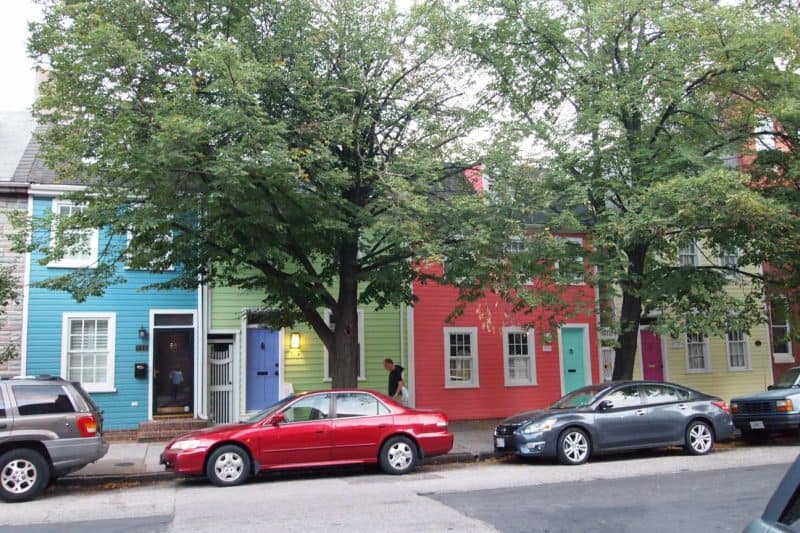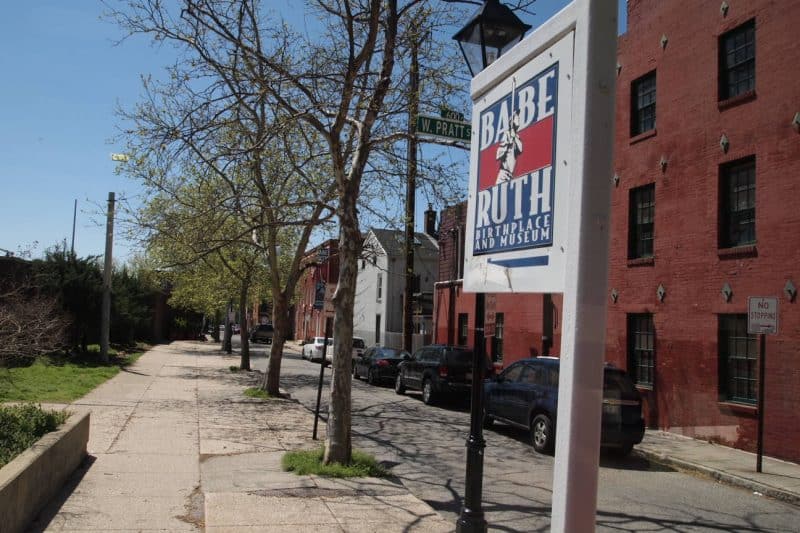Baltimore: A Tour Yields Fun Facts About Charm City

I love taking trolley tours. Mostly because I want to know the lay of the land in a new city, and also because of what the guides tell me. I love those interesting facts that are shared as we gawk out the trolley windows and click pictures of the sites. Here are some of the things we learned today during a morning tour of Baltimore.
Baltimore is famous for its row houses. Not townhouses, but row houses, some of which are only 11 feet wide. They all have a set of steps to enter, and if the steps are made of granite, it means the family is richer than steps made of mere bricks. There used to be 300,000 row houses where immigrants from Poland, the former Czechoslovakia, and Ireland used to live, and today there are half that many.

There are a couple reasons for the mass demolition of these row houses, many of which date back to before the 19th century. One catalyst is the Great Recession of ’08.
Many analysts agree, in order for Baltimore’s local housing market to fully recover from its pre-recession highs, the city must rebuild. Unfortunately, this means that a unique piece of the city’s history is dwindling.
Writer Tom Clancy bought two adjacent condos in Fell’s Point, and turned the basements of both of them into a shooting gallery. There are museums dedicated to

Dentistry and to Public Works in the city, and an art gallery devoted to untrained artists called the Visionary Art Museum. You can see a pair of teeth worn by George Washington in the Dental Museum, which is only open by appointment.
The Charm City Connector is a free public bus service that travels in three loops around the city. Since 2010, it’s been paid for partly by fees levied in the city’s parking lots. However the water taxis aren’t free, and that’s another easy way to get from one side of the harbor to the other.

In 1904, Baltimore suffered from a terrific fire that destroyed 60 blocks, and stopped only at the granite buildings downtown. Firemen from many other states came to try to put out the blaze and found that their hoses didn’t fit the spigots here. After that, the federal government passed a law that all fire spigots have to be the exact same size.
Francis Scott Key wrote a poem about the bombardment of Baltimore during the war of 1812, it was his brother who later set the poem to music and somehow, this lousy song became our country’s national anthem.

Babe Ruth’s parents lived in an apartment over a saloon where his dad worked. But his mother didn’t little George Ruth to be born there so they went over to a narrow brick row house where her parents lived that’s still standing near Camden Yards baseball park. Today it is marked with a banner.
Bromo Seltzer was invented in Baltimore, and their 2 1/2 million square foot convention center located near where this happened, is occupied 70 % of the time. Most convention centers would be happy to be occupied 1/3 as many days of the year.
Find out more about Baltimore at their tourism website.
